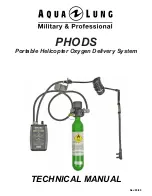
15
Once or Twice a Month Mainte-
nance
Piston and valve casing maintenance
The pistons and valve casings are designed with
very little clearance between each other therefore,
it is very important that these precision parts be
handled with care.
1.
Wrap a cleaning rod with gauze so that no
metal is exposed.
2.
Remove dirt from the inside of the valve cas-
ings.
* In models that are equipped with valve springs
under the valves, remove the springs from the
valve casing before cleaning.
3.
Use the gauze to remove dirt from the pistons.
4.
After applying valve oil, gently return the pis-
ton to its corresponding valve casing. At this
time, make sure that the valve guide properly
fi ts into the notch.
After
fi rmly tightening the valve cap, move the
piston up and down a few times to distribute
the oil evenly.
Cleaning rod
Gauze
* Exposed metal can damage the instrument.
Body maintenance
Use a polishing cloth to gently wipe the instru-
ment’s surface. If dirt or tarnish is obvious, the
following products can be used.
For lacquer fi nishes
Polishing cloth + lacquer polish
For silver plate
Silver cloth + silver polish
For a beautiful shine, buff the instrument with a
silicone cloth.
Th
e piston is the most important part of
the instrument. Never treat the pistons
roughly, drop the piston, or let the piston
fall, etc. If the piston becomes damaged or
dented, never return it to the valve casing.
Contact the dealer from whom you pur-
chased the instrument.
Maintenance
* Do not apply too much oil.
* Make sure that the number stamped on the valve
casing matches the number stamped on the piston.
















































